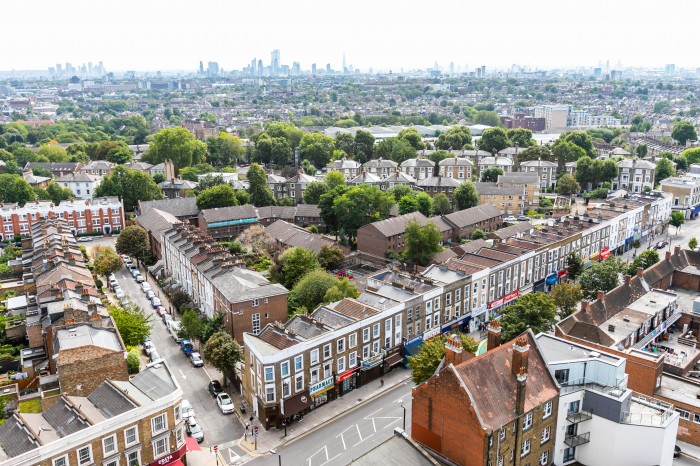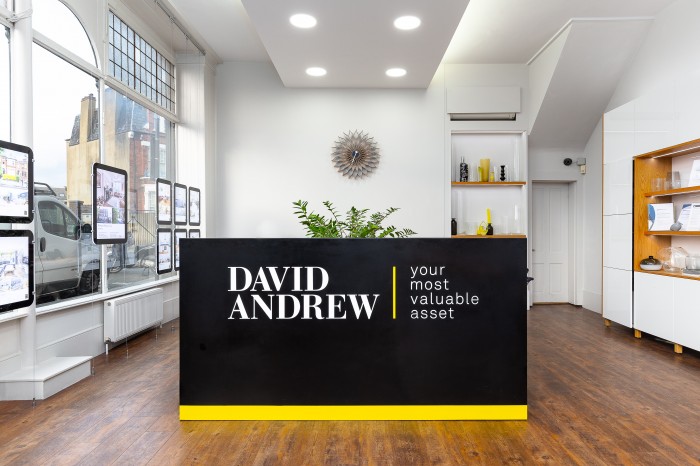The EWS1 Housing Scandal
Posted in October 2020
The dilemma that over a million flat owners are having to face because of the External Wall Survey certificate (EWS1)

Since the tragic fire at Grenfell back in June 2017, up to 1.5 Million flats could now prove to be unmortgageable for the foreseeable future. To ensure that sales chains don't collapse and to avoid being turned down by estate estate agents, people are desperate for an EWS1 certificate, to prove that their block is safe to sell and inhabit. Without this external wall survey, banks and building societies will not lend on flats in certain blocks. So when is it necessary to obtain an EWS1 to buy, sell or get a new mortgage? And what happens if you can't get one or when the block fails to pass all the necessary fire-safety checks.
What is the EWS1 Certificate?
In the wake of the disastrous fire at Grenfell that tragically saw 72 people lose their lives, the government has tightened the fire safety advice for flats. When lenders started to require proof that buidlings met the new guidelines, sales started to fall. This was partly due to the bank valuations not being able to perform the required detailed checks and ultimately refusing to say what the flats were worth.
In December 2019, the RICS (Royal Institution of Chartered Surveyors) and the Building Societies Association and the UK Finance bodies created the EWS1 form to try and resolve this blockage. It standardises fire-safety checks for buildings taller than 18 metres (six-storeys) and is valid across all flats in a block for 5 years. For the form to be signed off, an expert must check that the wall structures, balconies, insulation and cladding all comply. This requires holes to be cut to look inside walls and for material samples to be tested in a laboratory. In the event that flammable materials are discovered, they can stay only if the exact combination passes a test whereby a three-storey model wall is set on fire.
What is causing the problem?
At present, only 291 fire engineers can make the invasive checks. Approximately, 73% of blocks over 18 metres and 96% of those below this height still have no EWS1 certificates, according to the ARMA (Association of Residential Managing Agents) - the block manager body.
'Getting the EWS1 is just the start of the journey. It's likely to give you some bad news,' says Martin Boyd of the charity, Leasehold Knowledge Partnership (LKP). 9 out of 10 flat owners who had an EWS1 got the lowest rating of B2 on which banks will not lend, according to a recent LKP survey. This was also verified by an inspection company. In addition, of 2,000 blocks of all heights checked by Facade Remedial Consultants (FRC) 92% failed with B2 ratings.
Under the leasehold law, flat owners are therefore, liable to pay to have these defects fixed. These bills can range from £4,000 for balconies up to £29,000 for cladding, but reached as high as £115,000 in one block in Manchester.
ARMA estimated that there are only around 200 companies that can fix facades and this process can take approximately 1 year on a tall block. Which means that fixing the 2,784 blocks over 18 metres with flammable cladding, which is the number registered with a £1 Billion government fund, would take approximately 14 years to fix. In addition, you can only get a mortgage once the repairs are complete and the block passes a new EWS1 check. Which means, until that can be done, the leaseholders are in effect stuck. "Even if you only need a small amount of remediation, you're still looking at a 6-9 month wait" Boyd adds.
Do low-rise blocks also need an EWS1?
Just a month after the industry introduced the EWS1 legislation for the 12,500 blocks that are over 18 metres in height, the government issued advice that brought low-rise buildings into the fold too. Since then, lenders have required the form even for three-storey blocks without cladding. Since 1945, England has 1.5 Million flats in blocks that are over three-storeys high. Each of these could now require EWS1 forms. Although, it does seem to be at the lender's discretion as to whether they require the EWS1 forms or not.
The EWS1 Ratings
There are 5 options although the one question this all comes down to is whether the building needs work or not. If it does, the banks will not lend. Which means that even buildings with small amounts of cladding that are deemed to be unsafe, will be considered as unmortgageable as those with the most dangerous fire risks.
To start the EWS1 (External Wall Survey) process, an expert needs to be appointed at a cost of approximately £7,000 - £8,000.
Form Option A - When the external wall materials are notcombustible:-
- A1 - No balconies or external walkways. No balconies with flammable materials. No remediation needed. Mortgage granted.
- A2 - There are balconies or external walkways. The balconies have flammable materials. If the fire risk is acceptable - no remediation needed. Mortgage granted.
- A3 - There are balconies or external walkways. The balconies have flammable materials. If the fire risk is notacceptable - remediation needed. Mortgage refused. £4,000 average balcony bill and 6-12 months to complete repairs.
Form Option B - When the external wall materials arecombustible:-
- B1 - When an expert has the knowledge required for the facade assessment. £5,000 - £7,000: expert assesses fire risk of external walls and balconies. Wait of 3-6 months. If the fire risk is considered acceptable - no remediation needed. Mortgage granted.
- B2 - An expert does not have the knowledge required for the facade assessment so a fire engineer needs to be appointed. £5,000- £7,000: expert assesses fire risk of external walls and balconies. Wait of 3-6 months. If the fire risk is not considered acceptable - remediation needed. Mortgage refused. £29,000 average cladding bill and years for the repairs to be completed.
How to get an EWS1 organised
This can only be commissioned by the building's landlord i.e. the freeholder. However, if the block is run by leaseholders, the resident's management company or right-to-manage company. They would normally require the block's managing agent to obtain the form. So it's best to ask the agent if there's an EWS1 in place and if so, what the rating is. If it's failed, you need to obtain a copy of the survey to see what it is based on.
Can you get your own EWS1?
As a leaseholder who doesn't own the building, the answer is no.
Can you legally force a building to get an EWS1?
According to Martin Boyd 'You have limited legal rights to force the landlord to carry out cladding remediation and no right to require him to carry out an EWS1 survey. If they refuse, it's so, so hard'. Some landlords have refused to get EWS1 surveys for low-rise blocks, because they say the form is only for buildings above 18 metres. When lenders require the form anyway, leaseholders are stuck. Remind your landlord they have a legal obligation to ensure the walls are safe and ask for evidence of what they have done, says Giles Grover, a leaseholder and spokesperson from the Manchester Cladiators. The Fire Safety Bill will soon require landlords to check facades, but this is not the same as an EWS1 certificate.
Who can carry out facade checks?
An RICS registered expert or the Institution of Fire Engineers. They must also have public liability insurance, which is often difficult to obtain.
What is the cost involved?
According to Dorian Lawrence, MD of FRC 'It depends massively on size and location'. His company charges from £2,500 for a low-rise block with one type of cladding to £25,000 for a 24-storey block of 200 flats with access equipment and road closures. A six-storey block would usually need an initial survey which would cost between £7,000 - £8,000 and an intrusive inspection by a fire engineer around £5,000 - £7,000.
Who is responsible for the costs?
Under most leases, the leaseholder must pay for the survey costs and the repairs. Contact LEASE, the government's leasehold advice agency in writing, to check whether or not your lease makes you liable. In almost every case where leaseholders have challenged cladding costs, tribunals have found they must pay, according to Boyd.
Can the government help?
The government has set aside £1.6 billion to fix unsafe flats, but this only covers flammable cladding and insulation in blocks above 18 metres. The money is expected to pay for less than a quarter of blocks that qualify. It excludes bills for balconies, structural fire-safety defects and low-rise blocks. You should therefore, ask the block manager if your building has registered with the funds and where it sits in the application process.
Shouldn't the EWS1 be paid for by the builder?
'If the building is less than 6 years old, you may be able to take an action under the Defective Premises Act 1972. Ask your landlord whether this has been considered,' says Boyd. Often, the subsidiary of the developer that built the block, no longer exists or it is too late to claim. If the block is less than 10 years old, you may be able to claim for defects that breached building regulations under the new build warranty. So it would be prudent to seek expert advice.
Is there anything else that can be done?
According to Grover, 'The first thing we tell residents to do is to organise'. So look into setting up a private Facebook leaseholders' group and raise awareness by dropping leaflets through doors. Start up a steering group so that the workload is shared. And create a Twitter account to start an effective and public social media campaign.
Latest posts
Free property valuation
With three local offices we have unrivalled market knowledge. A senior member of the David Andrew team will come to your property to provide an accurate sales valuation or rental valuation and offer comparable properties we have sold in order to justify our valuation and to show how we can achieve you the best possible price.
Register with us
Register today to receive instant alerts when we add properties that match your requirements.


